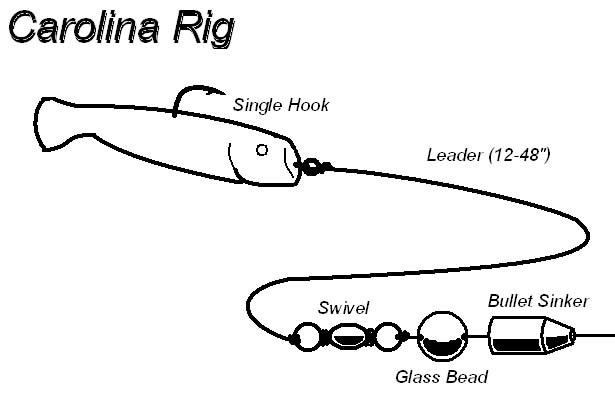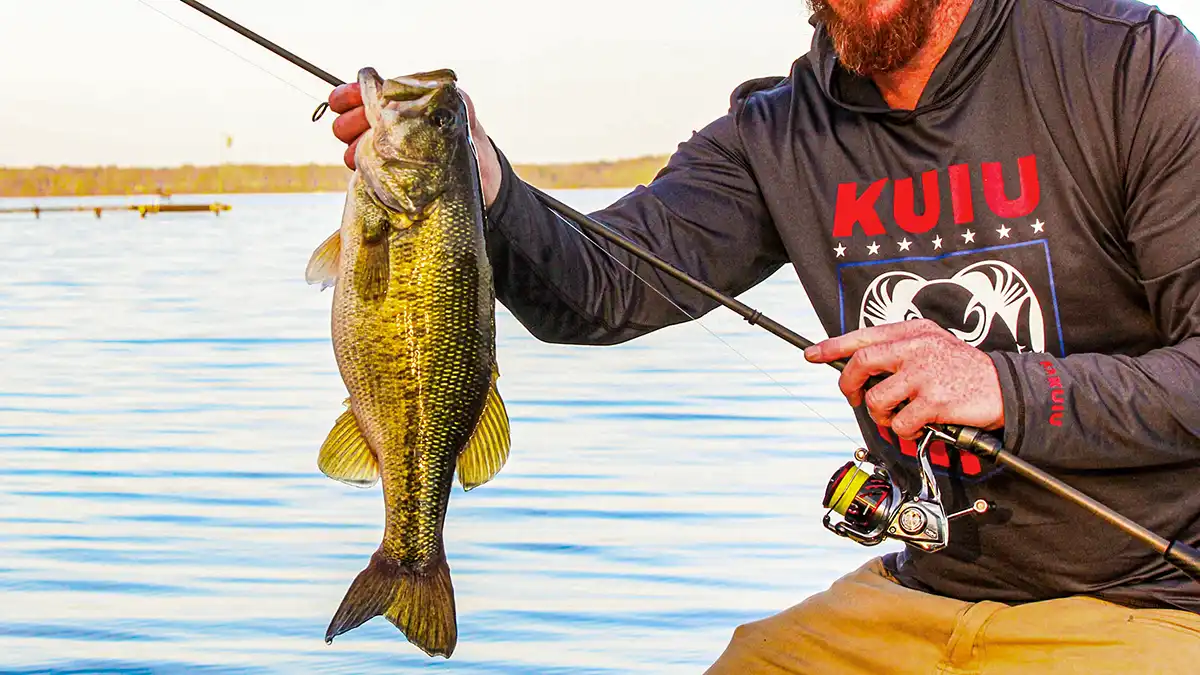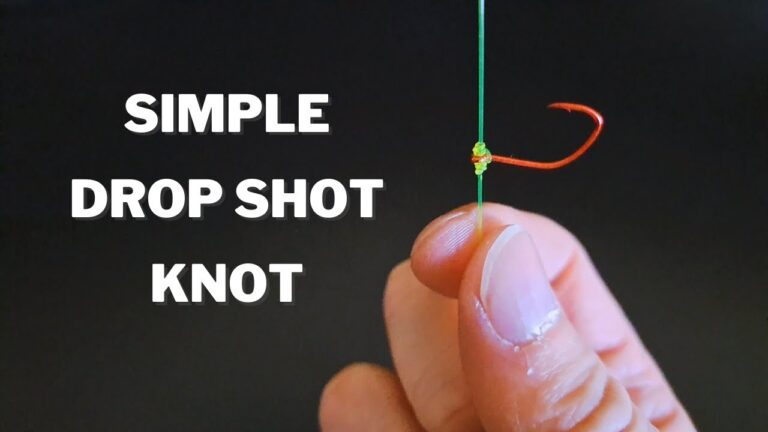Types of Fishing Gear & Tackle: Essential Guide for Anglers
Fishing is a beloved hobby and sport enjoyed by many. It requires the right gear and tackle to be successful.
Understanding the different types of fishing gear and tackle is essential for any angler, whether you’re a beginner or a pro. The right equipment can make your fishing experience more enjoyable and productive. This guide will explore the various options available, helping you choose what best suits your needs.
From rods and reels to lines and lures, each piece of gear plays a crucial role in your fishing success. By familiarizing yourself with these tools, you can improve your skills and increase your chances of landing that big catch. Let’s dive in and discover the essential fishing gear and tackle you need.
Introduction To Fishing Gear
Fishing is an age-old activity enjoyed by millions worldwide. Whether for sport or sustenance, the right fishing gear makes a big difference. Each piece of equipment has a specific purpose. Understanding these tools can improve your fishing experience.
Importance Of Choosing The Right Gear
Choosing the right fishing gear is crucial. It affects your success and enjoyment. The correct gear helps you catch more fish. It also ensures safety and comfort. Using the wrong gear can lead to frustration. You may miss out on the best catch. Selecting gear suited to your needs is vital.
Basic Categories
Fishing gear falls into several basic categories. Rods and reels are essential tools. They come in various types for different fishing styles. Lines and hooks are also important. They vary based on the type of fish and water conditions.
Lures and baits attract fish to your line. They mimic the fish’s natural prey. Tackle boxes keep your gear organized and accessible. Each category of gear plays a role in successful fishing.

Credit: en.wikipedia.org
Fishing Rods
Fishing rods are essential tools in the world of angling. They come in different materials and types. Each suits various fishing environments and techniques. Understanding the different types helps in choosing the right rod for your fishing needs.
Materials And Construction
Fishing rods are made from various materials. Each material offers unique advantages.
- Fiberglass: Durable and flexible. Ideal for beginners.
- Graphite: Lightweight and sensitive. Perfect for experienced anglers.
- Composite: A mix of fiberglass and graphite. Combines flexibility and sensitivity.
The construction of the rod also matters. Pay attention to the rod’s length, action, and power. These factors affect casting distance and fish handling.
Types Of Rods
Different types of rods serve different fishing purposes. Below are the common types:
| Type of Rod | Key Features | Best For |
|---|---|---|
| Spinning Rod | Easy to use. Good for light to medium fishing. | Beginners and casual fishers. |
| Baitcasting Rod | More control. Suitable for heavier lures. | Experienced anglers. |
| Fly Fishing Rod | Flexible. Designed for fly fishing. | Fly fishing enthusiasts. |
| Trolling Rod | Strong. Built for trolling techniques. | Deep-sea and big game fishing. |
Reels
Fishing reels are essential for casting and retrieving the fishing line. They come in various types, each suited for different fishing styles. Understanding the differences can help you choose the right reel for your needs.
Spinning Reels
Spinning reels are the most popular type of fishing reel. They are easy to use and ideal for beginners. These reels work well for a wide range of fish species. They have a fixed spool, and the line is released by flipping the bail arm. This design allows for smooth casting and retrieval.
- Great for light tackle
- Easy to use
- Versatile for different fishing styles
Baitcasting Reels
Baitcasting reels are preferred by experienced anglers. They offer more control and accuracy. These reels have a rotating spool, and the line is released by pressing a button. This design is ideal for heavy tackle and catching larger fish. However, they require more skill to use effectively.
- Perfect for heavy tackle
- More control and accuracy
- Best for experienced anglers
Fishing Lines
Fishing lines are essential for any fishing adventure. They connect the angler to the fish. Different types of fishing lines serve different purposes. Understanding each type helps choose the best line for your needs.
Monofilament
Monofilament lines are popular among anglers. They are made from a single strand of material. This type of line is flexible and easy to handle. It is also affordable, making it a great choice for beginners.
Monofilament lines stretch under pressure. This feature helps absorb the shock of a fighting fish. The stretch can also be a drawback. It reduces sensitivity, making it harder to feel light bites.
Monofilament lines come in various colors. Clear lines are less visible to fish. Colored lines help anglers see the line above water. Choosing the right color depends on the water conditions and target species.
Braided Lines
Braided lines are made from multiple strands of synthetic material. These strands are woven together. This creates a thin, strong, and durable line. Braided lines are more expensive than monofilament, but they offer several advantages.
Braided lines have little to no stretch. This provides excellent sensitivity. Anglers can feel the slightest nibble. The lack of stretch also helps set the hook quickly. This is important when fishing with lures.
Braided lines are ideal for heavy cover. They can cut through vegetation and handle rough conditions. The thin diameter allows for longer casts. It also helps the line sink faster in deep water.
Braided lines are visible above water. Using a leader can reduce visibility. This helps avoid spooking fish. Leaders are often made of monofilament or fluorocarbon.
| Feature | Monofilament | Braided |
|---|---|---|
| Material | Single Strand | Multiple Strands |
| Stretch | High | Low |
| Sensitivity | Low | High |
| Visibility | Varies | High |
| Cost | Affordable | Expensive |
Hooks
Hooks are essential in fishing gear and tackle. They play a crucial role in catching fish. Different types of hooks serve different purposes. Understanding hook sizes and shapes helps in making the right choice.
Hook Sizes And Shapes
Hooks come in various sizes and shapes. Each size and shape is designed for specific types of fish. Small hooks are perfect for small fish, while larger hooks catch bigger fish. The shape of the hook also matters. Some hooks have a circular shape, while others are more straight or curved.
Circular hooks are great for catch-and-release fishing. They reduce injury to the fish. Curved hooks, on the other hand, are better for keeping bait in place. Straight hooks are versatile and work well with many fishing techniques.
Choosing The Right Hook
Choosing the right hook depends on the type of fish you want to catch. Research the fish species in your area. This will help you choose the correct size and shape. Consider the bait you will use. Some hooks work better with live bait, while others are ideal for artificial lures.
Pay attention to the hook’s material. Stainless steel hooks resist rust and last longer. High-carbon steel hooks are strong and sharp, providing better penetration. Match the hook to your fishing environment. Saltwater fishing requires different hooks than freshwater fishing.
Experiment with different hooks to find what works best. Fishing is as much about technique as it is about equipment. The right hook can make a significant difference in your fishing success.
Lures And Baits
Choosing the right lures and baits is essential for a successful fishing trip. They attract fish, making it easier for you to catch them. Understanding the different types of lures and baits can significantly improve your fishing experience. Let’s explore the two main categories: artificial lures and live baits.
Artificial Lures
Artificial lures are designed to mimic the movement and appearance of real prey. They are reusable and come in many types, such as:
- Crankbaits: These lures dive and wobble, imitating small fish.
- Spinnerbaits: They have spinning blades that reflect light and create vibrations.
- Soft Plastics: These lures mimic worms, grubs, and other creatures.
- Jigs: Weighted lures with a hook, perfect for catching bass.
Each type of artificial lure works best in specific conditions. For example, crankbaits are excellent in deep water, while spinnerbaits are ideal in murky water.
Live Baits
Live baits are actual, living creatures used to attract fish. They are highly effective because of their natural movement and scent. Popular live baits include:
| Type of Live Bait | Best For Catching |
|---|---|
| Worms | Trout, Bass, Catfish |
| Minnows | Crappie, Perch, Walleye |
| Leeches | Walleye, Northern Pike |
| Crickets | Bluegill, Sunfish |
Worms are the most versatile live bait and can attract various fish species. Minnows are great for larger predators like walleye. Live baits often require more care, such as keeping them alive and handling them properly to avoid harming the fish. Yet, their effectiveness often outweighs the extra effort.
Fishing Accessories
Fishing accessories play a vital role in ensuring a successful fishing trip. These tools enhance your fishing experience. They make it easier to catch fish. Understanding the different types of fishing accessories can help you choose the right ones for your needs.
Tackle Boxes
Tackle boxes are essential for keeping your gear organized. They come in various sizes and styles. Some have multiple compartments, while others have large open spaces. Choose one that fits your gear and is easy to carry. A good tackle box can save you time and frustration. Always know where your tools are.
Fish Finders
Fish finders help locate fish underwater. They use sonar technology to detect fish and underwater structures. These devices vary in complexity. Some are simple, while others offer detailed maps and data. A fish finder can greatly improve your catch rate. It’s a valuable tool for both beginners and experienced anglers.

Credit: www.wired2fish.com
Safety Equipment
Fishing can be a relaxing and rewarding activity. Yet, safety should always come first. Using the right safety equipment is crucial for any fishing trip. This will help you stay protected and prepared.
Life Jackets
Life jackets are a must for any fishing trip. They keep you afloat if you fall into the water. Modern life jackets are lightweight and comfortable. Choose one that fits well and allows easy movement. Make sure everyone on board wears a life jacket. Safety first.
First Aid Kits
A first aid kit is another essential piece of safety equipment. Fishing can lead to minor injuries like cuts or scrapes. Having a first aid kit helps you treat these quickly. Include bandages, antiseptic wipes, and pain relievers. This ensures you are ready for any small emergencies. Always check your kit before heading out. Replace any used or expired items.
Care And Maintenance
Proper care and maintenance of your fishing gear and tackle ensure they last longer and perform better. Clean and store your equipment correctly to avoid damage and extend their lifespan. Below are some tips and practices to help you maintain your fishing gear.
Cleaning Your Gear
Cleaning your fishing gear after every use is essential. Saltwater, dirt, and grime can cause damage over time. Here’s how to keep your gear clean:
- Rinse rods, reels, and lures with fresh water.
- Use a soft cloth to wipe down the surfaces.
- For reels, remove the spool and clean the interior.
- Use a mild soap if necessary.
- Dry everything thoroughly to prevent rust.
Storage Tips
Storing your fishing gear properly helps prevent damage and prolongs its life. Follow these tips for effective storage:
- Store rods vertically to avoid bending.
- Keep reels in a dry, cool place.
- Use rod covers to protect the rod tips.
- Store tackle boxes in a dry location.
- Organize lures and hooks to prevent tangling.
Taking care of your fishing gear ensures that it stays in top condition. Clean and store your equipment correctly to enjoy many fishing trips without issues.

Credit: www.claimsjournal.com
Frequently Asked Questions
What Are The Main Types Of Fishing Gear?
Fishing gear includes rods, reels, lines, hooks, and baits. There are various types for different fishing techniques.
How Do I Choose The Right Fishing Tackle?
Choose fishing tackle based on the type of fish and water conditions. Consider the tackle’s durability and compatibility.
What Is The Difference Between A Rod And A Reel?
A rod is a long, flexible pole used to catch fish. A reel is a device attached to the rod to wind and unwind the fishing line.
What Is The Purpose Of Fishing Baits?
Fishing baits attract fish to the hook. They can be live bait, artificial lures, or prepared baits.
Conclusion
Fishing gear and tackle come in many types. Each serves a unique purpose. Choose the right equipment for your fishing needs. This ensures better chances of success. From rods to reels, every piece matters. Start simple and learn as you go.
Remember, practice makes perfect. Happy fishing!


